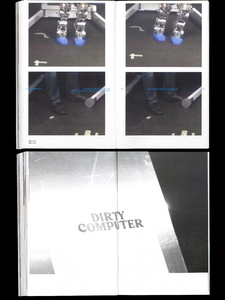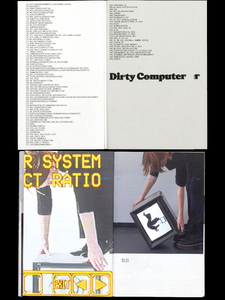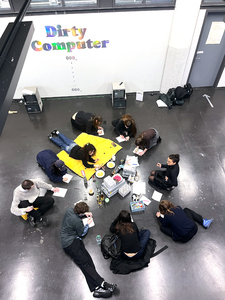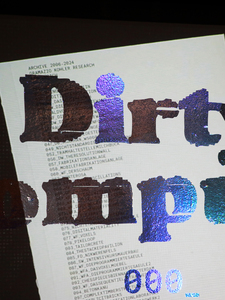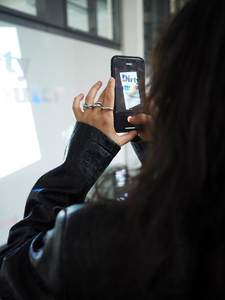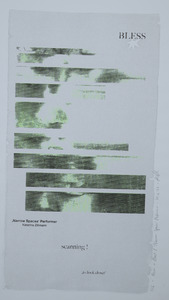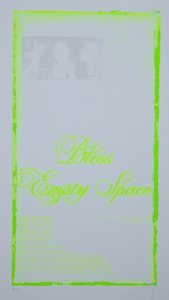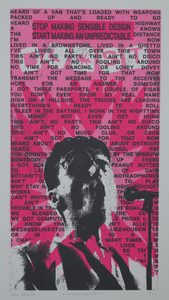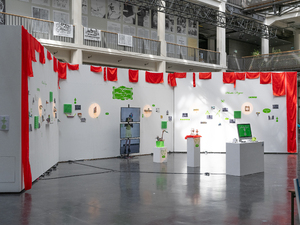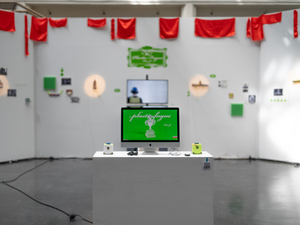"Alle Rechte vorbehalten"
| Begriff | Alle Rechte vorbehalten |
| Metakey | Rechtsschutz/Lizenz (rights:licence) |
| Typ | Keyword |
| Vokabular | Rechte |
1747 Inhalte
- Seite 1 von 146
Dirty Computer
- Titel
- Dirty Computer
- Kategorie
- Typ des Projekts/Werks
- Titel
- Dirty Computer
- Titel (en)
- Dirty Computer
- Urheberrechtshinweis
- © ungeklärt
- Rechtsschutz/Lizenz
- Freigabe Nutzung HfG
- Medienersteller/in
- Projektleiter/in
- Studiengang
- Importiert am
- 21.07.2025
- Übergeordnete Sets
- 1
Dirty Computer
- Titel
- Dirty Computer
- Kategorie
- Typ des Projekts/Werks
- Titel
- Dirty Computer
- Titel (en)
- Dirty Computer
- Urheberrechtshinweis
- © ungeklärt
- Rechtsschutz/Lizenz
- Freigabe Nutzung HfG
- Medienersteller/in
- Projektleiter/in
- Studiengang
- Importiert am
- 21.07.2025
- Übergeordnete Sets
- 1
Dirty Computer
- Titel
- Dirty Computer
- Kategorie
- Typ des Projekts/Werks
- Titel
- Dirty Computer
- Titel (en)
- Dirty Computer
- Urheberrechtshinweis
- © ungeklärt
- Rechtsschutz/Lizenz
- Freigabe Nutzung HfG
- Medienersteller/in
- Projektleiter/in
- Studiengang
- Importiert am
- 21.07.2025
- Übergeordnete Sets
- 1
Dirty Computer
- Titel
- Dirty Computer
- Kategorie
- Typ des Projekts/Werks
- Titel
- Dirty Computer
- Titel (en)
- Dirty Computer
- Urheberrechtshinweis
- © ungeklärt
- Rechtsschutz/Lizenz
- Freigabe Nutzung HfG
- Medienersteller/in
- Projektleiter/in
- Studiengang
- Importiert am
- 21.07.2025
- Übergeordnete Sets
- 1
Dirty Computer
- Titel
- Dirty Computer
- Kategorie
- Typ des Projekts/Werks
- Titel
- Dirty Computer
- Titel (en)
- Dirty Computer
- Urheberrechtshinweis
- © ungeklärt
- Rechtsschutz/Lizenz
- Freigabe Nutzung HfG
- Medienersteller/in
- Projektleiter/in
- Studiengang
- Importiert am
- 21.07.2025
- Übergeordnete Sets
- 1
Dirty Computer
- Titel
- Dirty Computer
- Kategorie
- Typ des Projekts/Werks
- Titel
- Dirty Computer
- Titel (en)
- Dirty Computer
- Urheberrechtshinweis
- © ungeklärt
- Rechtsschutz/Lizenz
- Freigabe Nutzung HfG
- Medienersteller/in
- Projektleiter/in
- Studiengang
- Importiert am
- 21.07.2025
- Übergeordnete Sets
- 1
Bless
- Titel
- Bless
- Autor/in
- Kategorie
- Typ des Projekts/Werks
- Schlagworte
- Datierung
- 15.11.2024
- Technik/Verfahren/Formate
- Experimenteller Siebdruck
- Ort: Institution
- Bemerkungen
- Druck 6/8
- Titel
- Bless
- Titel (en)
- Bless
- Urheberrechtshinweis
- © Selina Decker
- Rechtsschutz/Lizenz
- Freigabe Nutzung HfG
- Medienersteller/in
- Beziehung/Funktion
- Projektleiter/in
- Semester
- Importiert am
- 15.07.2025
- Übergeordnete Sets
- 1
"Narrow Spaces" Performer
- Titel
- "Narrow Spaces" Performer
- Autor/in
- Kategorie
- Typ des Projekts/Werks
- Schlagworte
- Datierung
- 27.06.2025
- Technik/Verfahren/Formate
- Experimenteller Siebdruck
- Ort: Institution
- Bemerkungen
- Druck 5/6
- Titel
- "Narrow Spaces" Performer
- Titel (en)
- "Narrow Spaces" Performer
- Urheberrechtshinweis
- © Katarina Zillmann
- Rechtsschutz/Lizenz
- Freigabe Nutzung HfG
- Medienersteller/in
- Beziehung/Funktion
- Projektleiter/in
- Semester
- Importiert am
- 15.07.2025
- Übergeordnete Sets
- 1
Bless or Blast
- Titel
- Bless or Blast
- Autor/in
- Kategorie
- Typ des Projekts/Werks
- Schlagworte
- Datierung
- 04.04.2025
- Technik/Verfahren/Formate
- Experimenteller Siebdruck
- Ort: Institution
- Bemerkungen
- Druck 5/11
- Titel
- Bless or Blast
- Titel (en)
- Bless or Blast
- Urheberrechtshinweis
- © Jana Maurer
- Rechtsschutz/Lizenz
- Freigabe Nutzung HfG
- Medienersteller/in
- Beziehung/Funktion
- Projektleiter/in
- Semester
- Importiert am
- 15.07.2025
- Übergeordnete Sets
- 1
An Unpredictable Blast
- Titel
- An Unpredictable Blast
- Autor/in
- Kategorie
- Typ des Projekts/Werks
- Schlagworte
- Datierung
- 11.10.2024
- Technik/Verfahren/Formate
- Experimenteller Siebdruck
- Ort: Institution
- Bemerkungen
- Druck 3/7
- Titel
- An Unpredictable Blast
- Titel (en)
- An Unpredictable Blast
- Urheberrechtshinweis
- © Lena Klevenow
- Rechtsschutz/Lizenz
- Freigabe Nutzung HfG
- Medienersteller/in
- Beziehung/Funktion
- Projektleiter/in
- Semester
- Importiert am
- 15.07.2025
- Übergeordnete Sets
- 1
Plastic Fugue
- Titel
- Plastic Fugue
- Titel
- Plastic Fugue
- Titel (en)
- Plastic Fugue
- Urheberrechtshinweis
- © Hoin Ji
- Rechtsschutz/Lizenz
- Freigabe Nutzung HfG
- Medienersteller/in
- Beziehung/Funktion
- Medien-Beschreibung
- Plastic Fugue, eine interaktive Klanginstallation, bestehend aus sechs Flöten (air 5-10, air Pp 1), die jeweils nur einen Ton erzeugen und über codierte Dirigierknöpfe ferngesteuert aktiviert werden. Die Reihenfolge der Töne ist jedes Mal zufällig. Die Fuge wird auf ihre Struktur reduziert und in ein Spiel mit Sequenz und Zeit überführt. Anstelle der idealisierten Ordnung stelle ich mir eine offenere Art der Klangmontage vor, eine Art demokratischer Kontrapunkt.
- Plastic Fugue, eine interaktive Klanginstallation, bestehend aus sechs Flöten (air 5-10, air Pp 1), die jeweils nur einen Ton erzeugen und über codierte Dirigierknöpfe ferngesteuert aktiviert werden. Die Reihenfolge der Töne ist jedes Mal zufällig. Die Fuge wird auf ihre Struktur reduziert und in ein Spiel mit Sequenz und Zeit überführt. Anstelle der idealisierten Ordnung stelle ich mir eine offenere Art der Klangmontage vor, eine Art demokratischer Kontrapunkt.
- Medien-Beschreibung (en)
- Plastic Fugue, an interactive sound installation, consisting of six flutes (air 5–10, air Pp 1), each producing only one tone and remotely activated through coded conducting buttons. The sequence of tones is random each time. The fugue is reduced to its structure and transformed into a play with sequence and time. Instead of the idealized order, I imagine a more open way of assembling sound, a kind of democratic counterpoint.
- Plastic Fugue, an interactive sound installation, consisting of six flutes (air 5–10, air Pp 1), each producing only one tone and remotely activated through coded conducting buttons. The sequence of tones is random each time. The fugue is reduced to its structure and transformed into a play with sequence and time. Instead of the idealized order, I imagine a more open way of assembling sound, a kind of democratic counterpoint.
- Projektleiter/in
- Semester
- Studiengang
- Typ der Abschlussarbeit
- Importiert am
- 14.07.2025
- Übergeordnete Sets
- 1
Plastic Fugue
- Titel
- Plastic Fugue
- Titel
- Plastic Fugue
- Titel (en)
- Plastic Fugue
- Urheberrechtshinweis
- © Hoin Ji
- Rechtsschutz/Lizenz
- Freigabe Nutzung HfG
- Medienersteller/in
- Beziehung/Funktion
- Medien-Beschreibung
- Plastic Fugue, eine interaktive Klanginstallation, bestehend aus sechs Flöten (air 5-10, air Pp 1), die jeweils nur einen Ton erzeugen und über codierte Dirigierknöpfe ferngesteuert aktiviert werden. Die Reihenfolge der Töne ist jedes Mal zufällig. Die Fuge wird auf ihre Struktur reduziert und in ein Spiel mit Sequenz und Zeit überführt. Anstelle der idealisierten Ordnung stelle ich mir eine offenere Art der Klangmontage vor, eine Art demokratischer Kontrapunkt.
- Plastic Fugue, eine interaktive Klanginstallation, bestehend aus sechs Flöten (air 5-10, air Pp 1), die jeweils nur einen Ton erzeugen und über codierte Dirigierknöpfe ferngesteuert aktiviert werden. Die Reihenfolge der Töne ist jedes Mal zufällig. Die Fuge wird auf ihre Struktur reduziert und in ein Spiel mit Sequenz und Zeit überführt. Anstelle der idealisierten Ordnung stelle ich mir eine offenere Art der Klangmontage vor, eine Art demokratischer Kontrapunkt.
- Medien-Beschreibung (en)
- Plastic Fugue, an interactive sound installation, consisting of six flutes (air 5–10, air Pp 1), each producing only one tone and remotely activated through coded conducting buttons. The sequence of tones is random each time. The fugue is reduced to its structure and transformed into a play with sequence and time. Instead of the idealized order, I imagine a more open way of assembling sound, a kind of democratic counterpoint.
- Plastic Fugue, an interactive sound installation, consisting of six flutes (air 5–10, air Pp 1), each producing only one tone and remotely activated through coded conducting buttons. The sequence of tones is random each time. The fugue is reduced to its structure and transformed into a play with sequence and time. Instead of the idealized order, I imagine a more open way of assembling sound, a kind of democratic counterpoint.
- Projektleiter/in
- Semester
- Studiengang
- Typ der Abschlussarbeit
- Importiert am
- 14.07.2025
- Übergeordnete Sets
- 1
